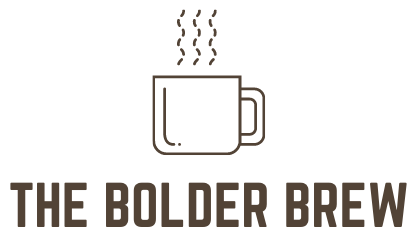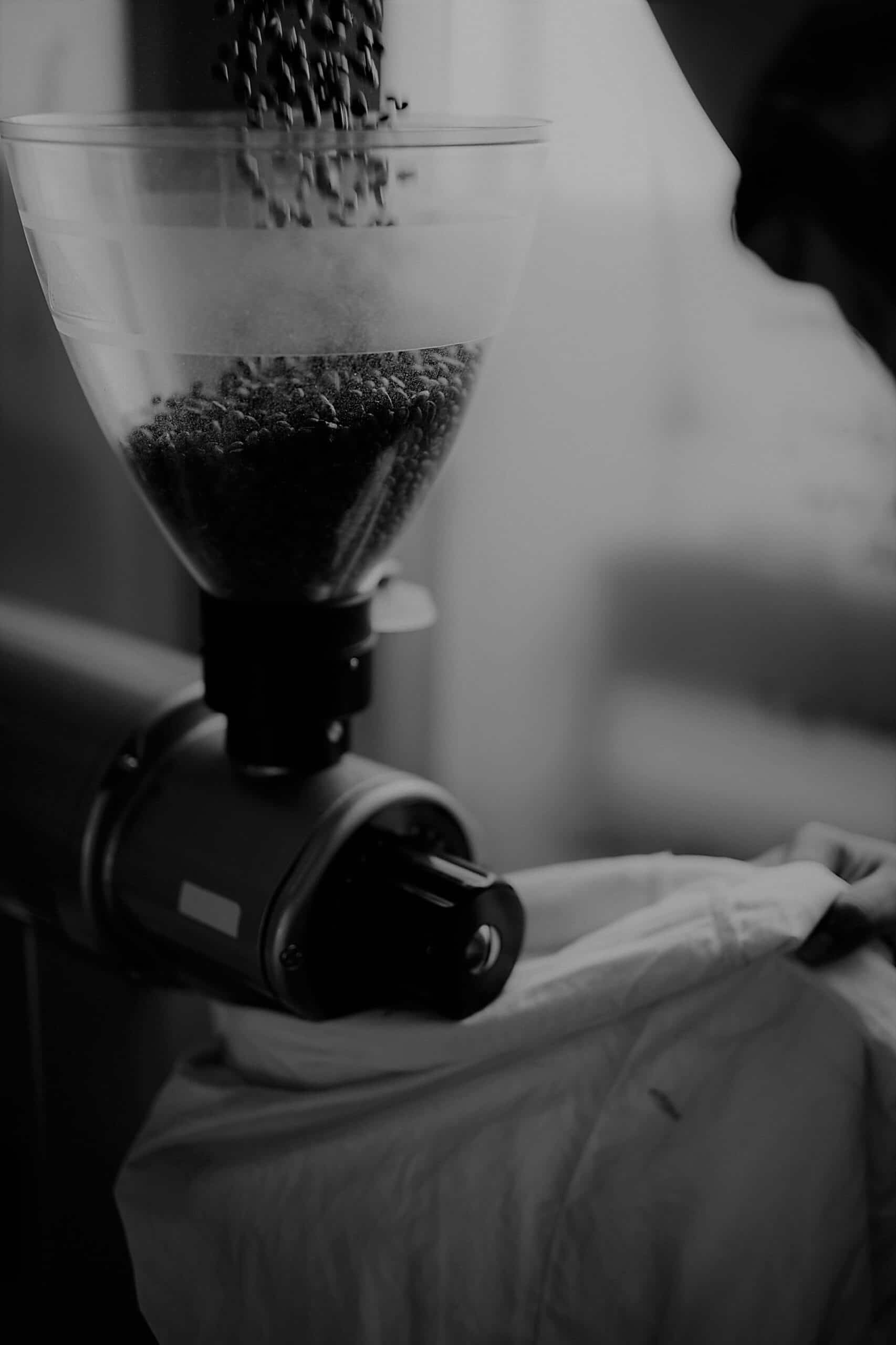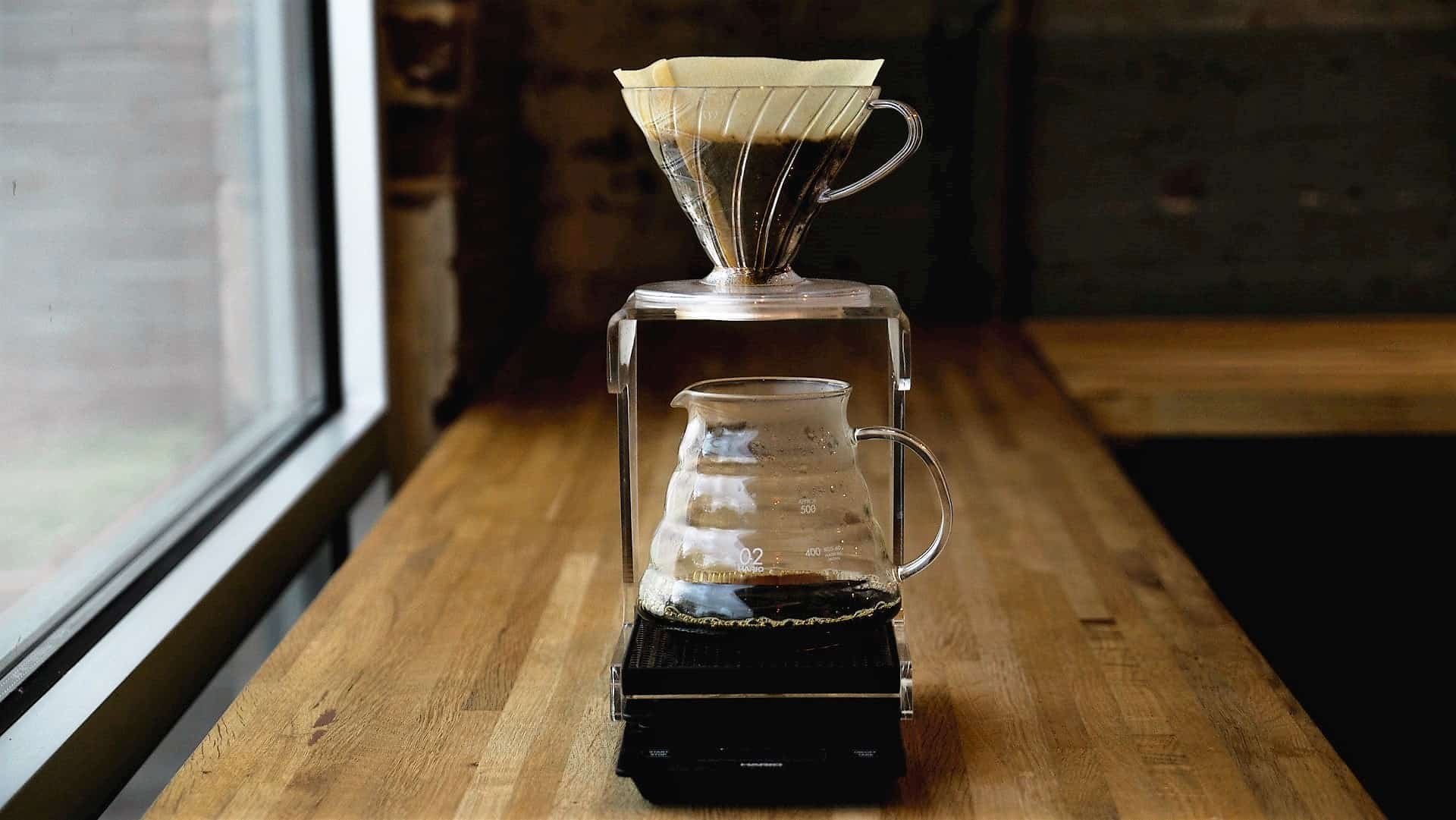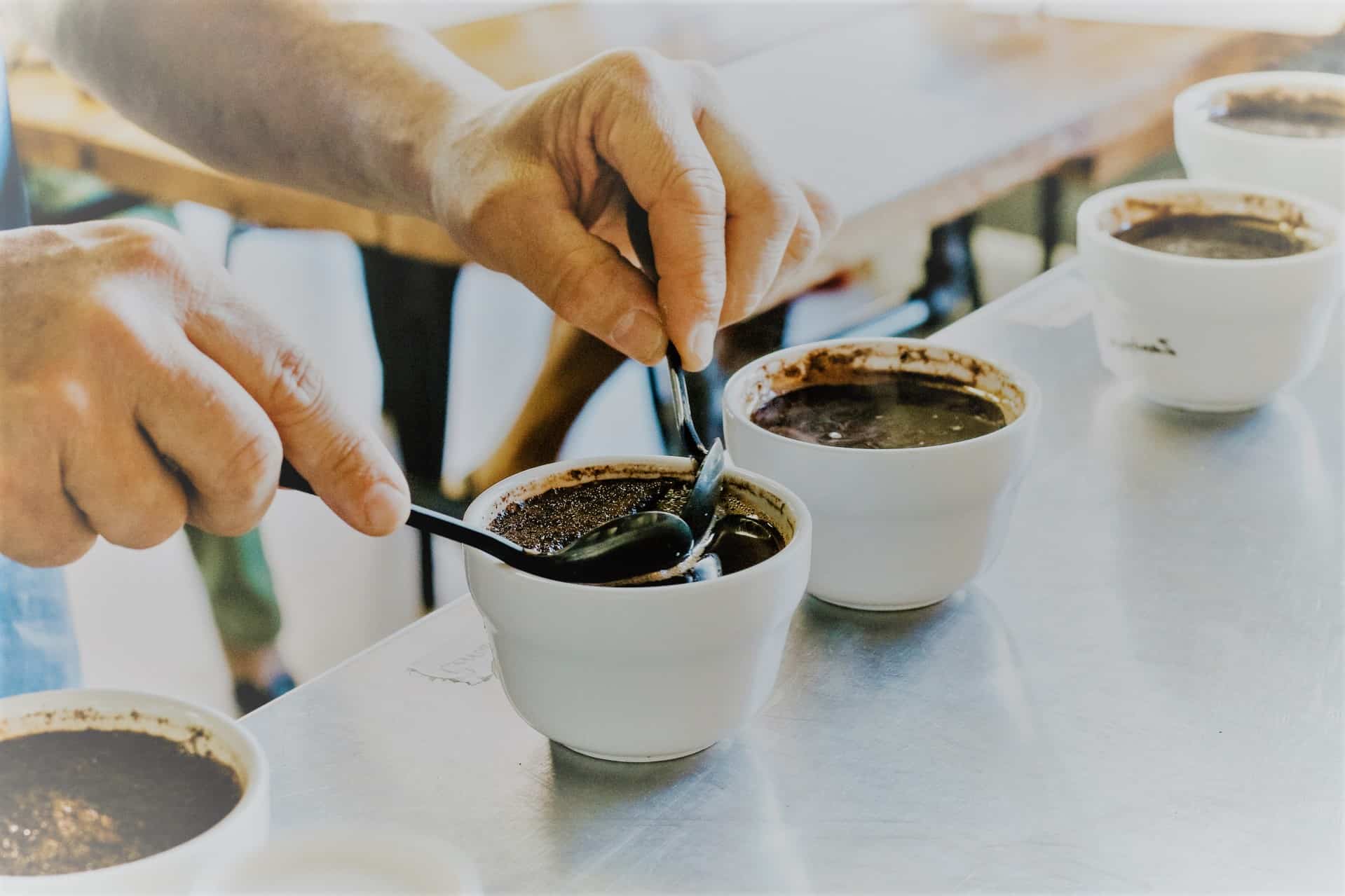Your Pour-Over Coffee Questions, Answered (Newbie-Friendly!)
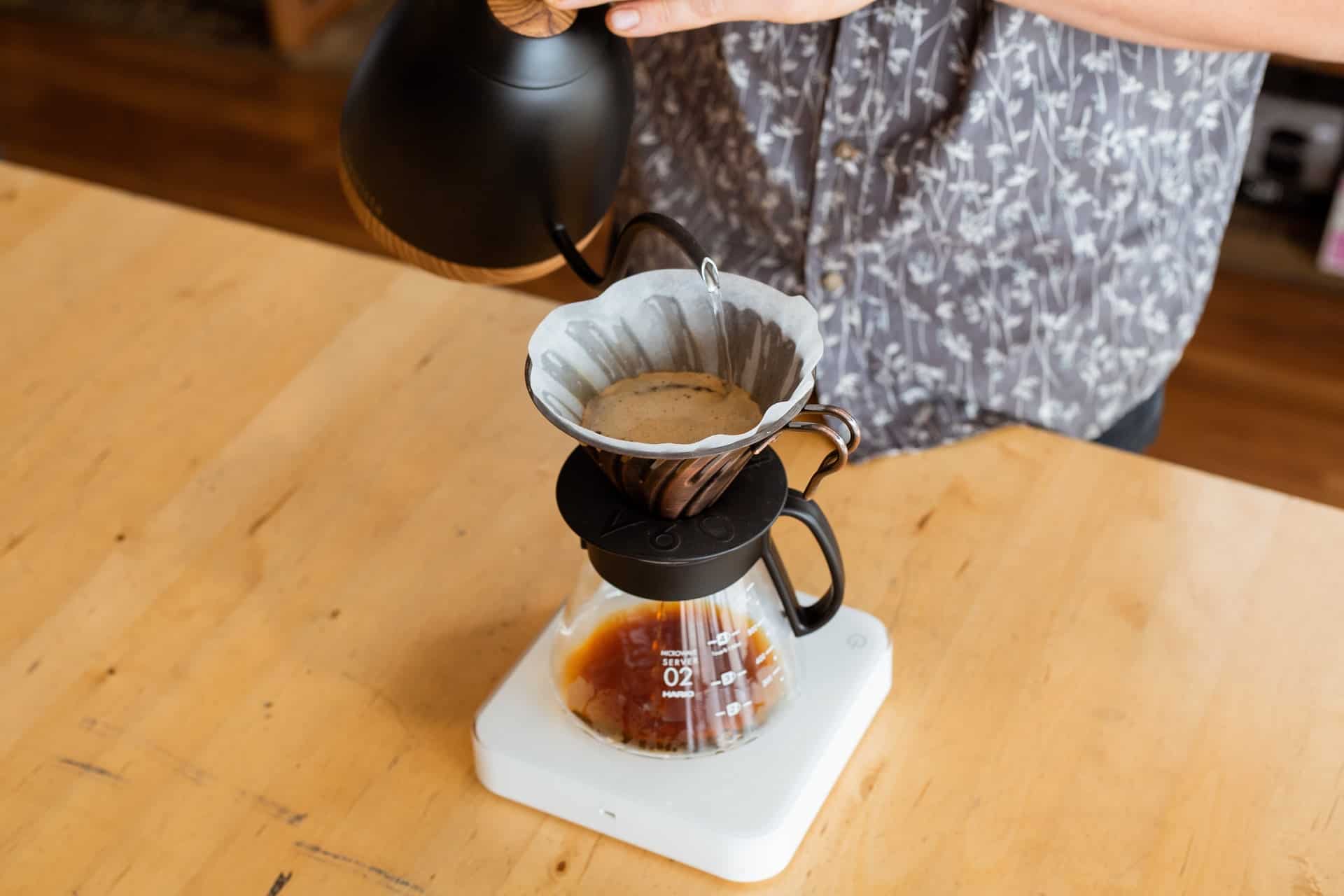
Even though Melitta Bentz invented pour-over coffee well over a century ago (source), it only became somewhat mainstream in the 2000s.
And to a large extent, it's still the domain of specialty shops and home coffee enthusiasts.
It remains new territory for lots of folks, so you might have some basic questions that you felt sheepish about asking your barista.
And those are exactly what we're going to cover here.
So, if you're new to pour-over brewing, then read on for a gentle introduction to this simple, fun, and above all delicious technique.
Table of Contents
- How does pour-over coffee work?
- Can you make pour over coffee without a filter?
- Is pour-over coffee the same thing as drip?
- Is pour over coffee hard to make?
- Doesn't pour-over coffee take a long time to make?
- Is there less caffeine in a pour-over?
- Is pour-over coffee healthier for you?
- What's the best pour-over coffee maker?
- Are pour-over coffee machines worth buying?
- Do you need a gooseneck kettle for pour-over coffee?
- How fine should you grind coffee for pour over?
- How hot should water be for pour over coffee?
- Why does my pour-over coffee taste off?
I'm an affiliate.
I hope my product recommendations make your life a little better! As a member of programs including Amazon Associates, I earn from qualifying purchases. If you do choose to purchase though links here, then I greatly appreciate your support!
How does pour-over coffee work?
Pour-over coffee works by using precise, manual pouring to control how coffee grounds and water mix. Compared to automatic brewing, pour-over brewing gives you more influence over the resulting flavor, but is more labor-intensive and less conducive to large batches.
Pour-over coffee often (but not always) uses a paper filter to minimize sediment and oils. It never uses any pressure besides gravity.
Can you make pour over coffee without a filter?
It's impossible to make pour-over coffee without some sort of filter. That's because something needs to hold the coffee grounds inside the dripper while water passes through them. However, it's possible to use metal filters instead of paper ones if you want a different taste and/or less waste.
Recall that pour-over coffee is a percolation method, which refers to how gravity pulls water through something porous (i.e., the bed of ground coffee). Without some sort of filter, the coffee grounds would pass right through the bottom of the dripper!
Is pour-over coffee the same thing as drip?
Pour-over coffee usually refers to manually pouring the water from a kettle, whereas drip coffee implies that a machine does the pouring automatically. Pour-over coffee and drip coffee often taste similar. Both are percolation methods, meaning water seeps through the coffee grounds (with the help of gravity).
Neither method is inherently better than the other.
Due to its more labor-intensive preparation, pour-over coffee is usually associated with specialty cafes that use better beans in the first place. That, of course, yields a better cup.
But you'd get a remarkably similar taste from brewing drip coffee in a high-quality machine, using the same beans, grind size, water temperature, and overall brewing time. Tasting notes might differ because of subtleties like filter paper or water distribution, but it's not likely that either one would be consistently better.
However, pour-over coffee is generally better than what you get from very cheap coffee machines.
Those tend to pour all the water in one place, which extracts the coffee unevenly and therefore misses its full potential flavor. That's much more noticeable with black coffee than with add-ins, but the degree of difference depends on your pour-over skills as well as your palate.
All in all, pour-over brewing simply gives the barista more control. That's a good thing if they're experienced and attentive--which most are--but a bad thing if they're not!
Is pour over coffee hard to make?
Pour-over coffee is easy to make because it's a quick, low-tech process with easy clean-up. There's no complex equipment to maintain, either. However, it can be hard to make consistently excellent pour-over coffee, since minor changes in process or equipment have huge effects on taste.
All that fuss is strictly optional, however.
Most pour-over drippers make it easy to get a tasty cup of coffee without much effort. We'll take a closer look at some equipment recommendations later on.
That said, you can spend a lot of time and energy in pursuit of the perfect cup.
There are nearly infinite combinations of basic brewing parameters like grind size and water temperature. Combinations that are great for one coffee might be mediocre for another, so it can take several batches to "dial in" these details.
That's still not hard, but it's time-consuming. Some folks (like yours truly) find it fun and rewarding; others don't.
Doesn't pour-over coffee take a long time to make?
Brewing pour-over coffee takes roughly 2-3 minutes, or slightly longer for batches larger than a couple servings. You can expect an additional 1-2 minutes of prep (including grinding) and 1 minute of clean-up, so the entire process remains well under 10 minutes, assuming your water is already hot.
Brewing time directly affects coffee flavor, so it's a good indicator of whether your coffee is likely to come out well. Visit this guide to learn more about the components of brewing time and how to optimize them.
Is there less caffeine in a pour-over?
Pour-over coffee has roughly as much caffeine per ounce as coffee from any other percolation method. It has far less caffeine per ounce than high-pressure methods like espresso, but pour-over servings are also much larger than espresso servings.
However, caffeine extraction isn't the same for all pour-overs.
Even with the same beans, different pour-over makers do best with different grind fineness, water temperature, and brewing time. Those factors each affect caffeine levels, so there's no single answer for all pour-over brewing in general, let alone for pour-over as a whole versus other methods.
One of the few things we can generalize is that gravity-only methods like pour-over brewing yield less caffeine than high-pressure methods like espresso, moka pot to an extent, or AeroPress to a far lesser extent (source). Higher pressure forces more of the coffee grounds to dissolve into the water, yielding not only more caffeine but a more concentrated flavor. But, again, those servings are also much smaller.
Is pour-over coffee healthier for you?
Pour-over coffee is as healthful as any method with a paper filter. Coffee contains oils called diterpenes, which raise cholesterol in certain people. Paper filters absorb these oils but metal filters do not. Keep in mind that adding creamer or sweetener affects the health of pour-over or any other coffee.
Whether your brewing/filter choice will actually affect your cholesterol is hard to say. Some studies, like this one in the journal Molecular Endocrinology or this one in the American Journal of Epidemiology, suggest that genetics play a large role in how (or whether) your body responds to diterpenes.
But the biggest factor is what you do or don't add to your pour-over. Cream and sugar (for instance) have the same health effects regardless of the coffee itself.
If pour-over brewing helps you make coffee good enough to drink black, then it might be indirectly more healthful, but not because of the brewing method itself.
What's the best pour-over coffee maker?
If you're new pour-over brewing, or just don't want to worry about details, then the best pour-over coffee maker is one with a ridged interior (to minimize clogging) and 1-3 small holes in the bottom (to slow down the flow of water). Melitta is the most popular example among dozens of similar ones.
If you're more experienced and prefer lots of control over the brew, then you may prefer a dripper with a larger opening (like a Hario V60) that lets water flow more freely. That allows more control over steeping and extraction, but also creates more room for error.
It's also worth considering newer options like the Clever Dripper or Hario Switch. Those are hybrids of pour-over and immersion brewing, with a valve/gasket that holds that water in the dripper until you open it. That opens up a wider range of brewing possibilities while remaining, technically, a pour-over.
Many drippers are available in multiple materials, usually plastic, ceramic, and/or stainless steel. I strongly recommend plastic: it's cheap, it's sturdy, it retains heat wonderfully, and it requires no preheating. What plastic lacks in elegance it more than makes up for in practicality.
By this point, I hope it's clear that no single pour-over dripper is "best."
You might find some more fun, intuitive, or easy than others, but remember that nearly all have cult followings and are capable of making incredible coffee!
In fact, your grinder makes a far larger difference than any other piece of brewing equipment.
The size and shape of coffee grounds directly affect flavor, and better grinders create far more consistent brews. Consequently, that's the better place to focus your research and money.
(Timemore makes some excellent and relatively affordable models, one of which I've reviewed right here.)
Are pour-over coffee machines worth buying?
Pour-over coffee machines (or "pour-over robots") guarantee consistent results, but cost hundreds of dollars. They are worth buying if you struggle to reproduce good brews or you need to brew many batches each day (as in a cafe). Most home users get equally good results by practicing with a quality grinder, kettle, and scale.
You still need to dial in a pour-over robot's process for each new coffee, just like you'd refine your manual process.
What's more, remember that they need maintenance like any other coffee machine, but with additional mechanical parts.
Do you need a gooseneck kettle for pour-over coffee?
Gooseneck kettles are helpful for pour-over coffee but not necessary. They restrict and aim the flow of water, which improves extraction for more consistently good coffee. You can still brew well with anything that has a small pouring spout/notch, like a measuring cup. It's just harder to make consistent pour-overs without a gooseneck kettle.
When you pour too quickly or unevenly, it tends to extract some areas of the bed of coffee more than others. That can lead to undesired flavors and inconsistent results.
Some drippers have just a couple of small holes in the bottom. That helps the water stay inside long enough to soak the coffee more evenly. Gooseneck kettles don't matter as much with those designs.
However, gooseneck kettles matter more with something like a Hario V60. Its very large bottom opening means water can pass through very quickly if poured too quickly. You can still brew delicious coffee in a V60 or similar dripper without a gooseneck kettle, but it's a little harder to get the same result twice in a row.
A gooseneck kettle takes less concentration to pour correctly and leaves less room for error, but in a pinch, it's easy to do without.
In fact, I've successfully used everything from a Pyrex measuring cup to a milk frothing pitcher with all of my many pour-over cones. Just take care to pour more delicately, since the less restricted flow makes it easy for too much water to gush out.
How fine should you grind coffee for pour over?
The proper grind for pour-over coffee varies more than you might think. As a rule, start with something a bit coarser than table salt. If the coffee tastes sour or watery (common with lighter roasts), then make it finer. If the coffee tastes unusually harsh or bitter (common with darker roasts), then make it coarser.
Aim for an overall brewing time of 2-3 minutes, and always use the same water temperature while experimenting with grind size.
How hot should water be for pour over coffee?
The perfect temperature for pour-over coffee is usually 90-95C/195-205F. It's fine to go higher, even just off boiling, especially with lighter roasts. Some dark roasts benefit from water as cool as 85C/185F, but that's rarely optimal. You may need to adjust your grind size in conjunction with water temperature.
Contrary to popular belief, hotter brewing water cannot burn your coffee. Remember, those beans are often roasted to 215C/420F or higher. Water can't exposed them to more than a fraction of the heat they've already endured.
However, dark roasts often contain more bitter- and charred-tasting compounds, which dissolve more readily at higher temperatures. But those come from the roasting process, and hotter water just draws more of them out.
Why does my pour-over coffee taste off?
Great pour-over coffee is the result of patient practice. Just like anything manual, it takes a while to get it right, and a while longer to get it consistently right.
You'll inevitably have some off-tasting batches along the way.
Fortunately, they're not a total waste, since they can indicate exactly how to refine your brewing process.
Before reading any further, we need to rule out three things that undermine pour-over brewing before you start.
(Seriously: sort these out before trying to troubleshoot any further!)
Are you using fresh beans from a quality roaster?
Freshness is everything.
Ideally, they're no more than 1-2 weeks old, but up to a month is usually fine.
The darker the roast, the shorter the window of freshness.
Light roasts may still taste terrific after a month, but darker ones almost certainly won't.
Do you have a good burr grinder?
Inconsistent coffee grounds don't extract evenly, so a grinder with high-quality burrs is essential.
Worthwhile manual grinders begin around $100 for a Timemore (reviewed here and available here), or you can pay about $140 for a basic electric grinder like the Baratza Encore (available here).
Is your water too soft or too hard?
Finally, brew with water that has some mineral content.
Trace minerals like sodium and magnesium reveal the nuances that good beans have to offer.
That means distilled and reverse osmosis water are out. Their total lack of minerals causes dull, flat coffee that no beans, brewing process, or equipment can remedy.
On the other end of the spectrum, overly hard water is also a problem.
Coffee and water chemistry is too big of a topic to tackle here, but start with James Hoffman's excellent guide if you to learn more.
Notice that I did not say you'll need a certain pour-over dripper or filter or kettle. Those things are fun to experiment with, but none is the key to good coffee.
Having covered all that, let's look at four common pour-over coffee issues and what you can do about them.
I need to reiterate that issues with your beans, grinder, or water could also cause these issues, so sort out the above before going any further.
When it's weak or watery
Weak or watery pour-over coffee happens when not enough of the coffee compounds have dissolved in the water.
The three main causes are too much water (more than about 18 grams per 1 gram of coffee), too coarse of a grind, or insufficiently hot water (below at least 85C/185F).
It's also possible to get a weak brew when using an ultra-fine grind. That sounds counterintuitive, but makes sense when you consider that water won't properly disperse through such fine grounds. This is rare, however, since many home grinders don't even grind fine enough to create this effect (and if they do, they're often painfully slow at that level).
When it's sour
Pour-over coffee often tastes sour when light-roasted beans are under-extracted. The easiest solution is to grind slightly finer while using hotter water, at least 95C/205F.
If your water is near boiling, and the grind is fine enough that brewing takes around 3 minutes, then the coffee itself may be the issue.
Some lighter batches of coffee are under-developed, meaning that the beans weren't roasted long to develop the richer flavor created by prolonged heating. That's not common from reputable roasters, but not unheard of.
When it's bitter
Bitter pour-over coffee usually means too much of the coffee compounds have dissolved. It's most common with dark roasts that are ground too fine and/or brewed with excessively hot water. Try grinding your coffee at least as coarse as table salt, then cool your water to 85C/185F (or even slightly lower) before brewing.
(As mentioned earlier on, hot water doesn't actually create the bitter taste; it just dissolves more of the bitter-tasting compounds that already existed.)
It's also possible that you're simply using too little water/too much coffee. That doesn't usually create more bitterness, but it can cause harshness or pungency that's easy to mistake for pure bitterness.
To rule that out, use at least 15 grams of water per 1 gram of coffee. You can go up to about 18 grams, but I find 16-17 is best for darker roasts (depending on the exact brewing device).
Remember, too, that some people enjoy the same level of bitterness that others find unpalatable.
If you're among the latter, then consider simply switching to a lighter roast. That might seem too obvious to mention, but keep in mind that bitterness is subjective, and enjoyment of bitterness is even more so.
